Affiliate disclosure: This post may contain affiliate links. Please see our Privacy Policy.
Growing turmeric at home is surprisingly easy, and these beautiful plants thrive indoors or outside with minimal care.
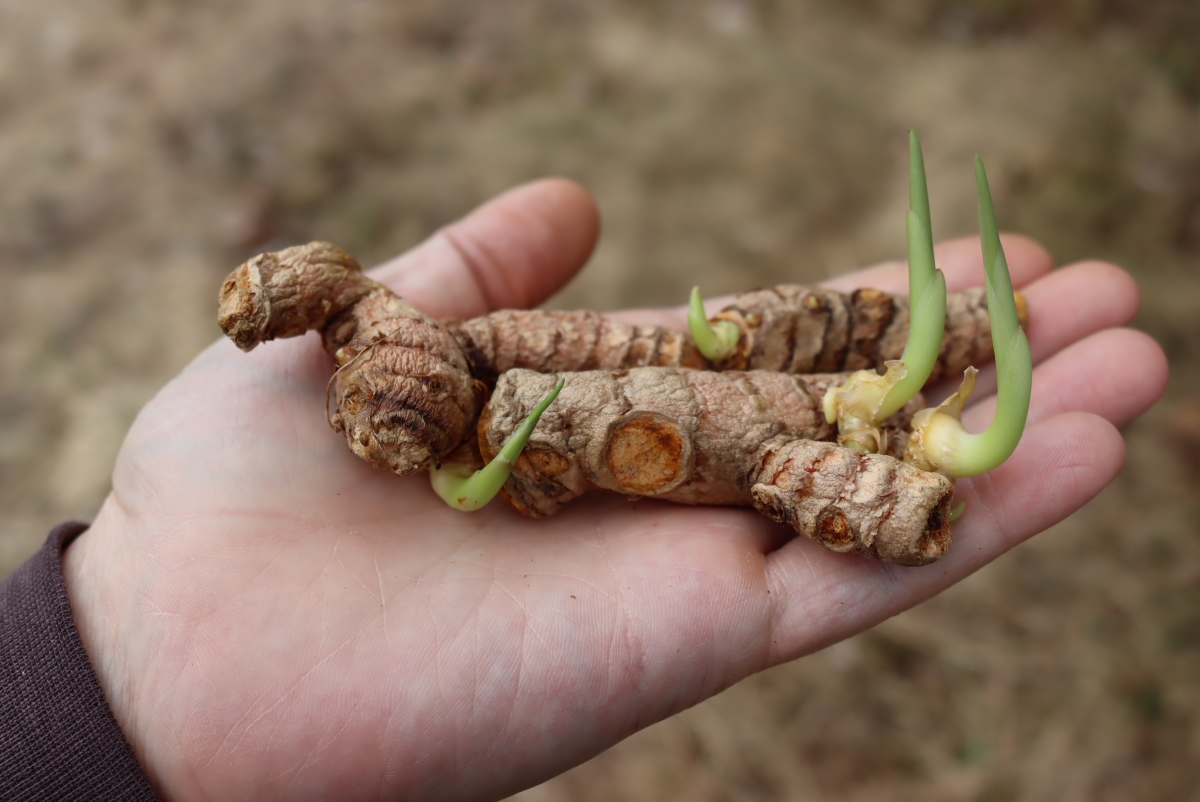
Most people know turmeric as a bright yellow spice powder that’s commonly used in curries. It also happens to be a powerful anti-inflammatory that’s gaining all sorts of attention as a herbal supplement.
The powdered spice is made from the rhizomes of the turmeric plant, which grow underground and look a lot like ginger.
We use a good bit of turmeric in our cooking and when our local food coop started carrying fresh turmeric root a few years back, I just had to try it. (If you’d like to try it yourself, you can also order boxes of fresh turmeric roots online.)
Fresh turmeric tastes almost nothing like powdered spice in my opinion and is incredibly vibrant. It has a mildly spicy flavor, rich earthy tones, and a subtle sweetness that only bears a passing resemblance to the grainy uni-dimensional turmeric spice powder.
Friends introduced me to “golden milk” or a chai latte made with turmeric and other spices. It’s unimpressive with powdered turmeric but truly exceptional with fresh turmeric root.
I started buying more and more turmeric, and at one point a few of the rhizomes on my counter sprouted. That got me thinking…
Can you grow turmeric at home?
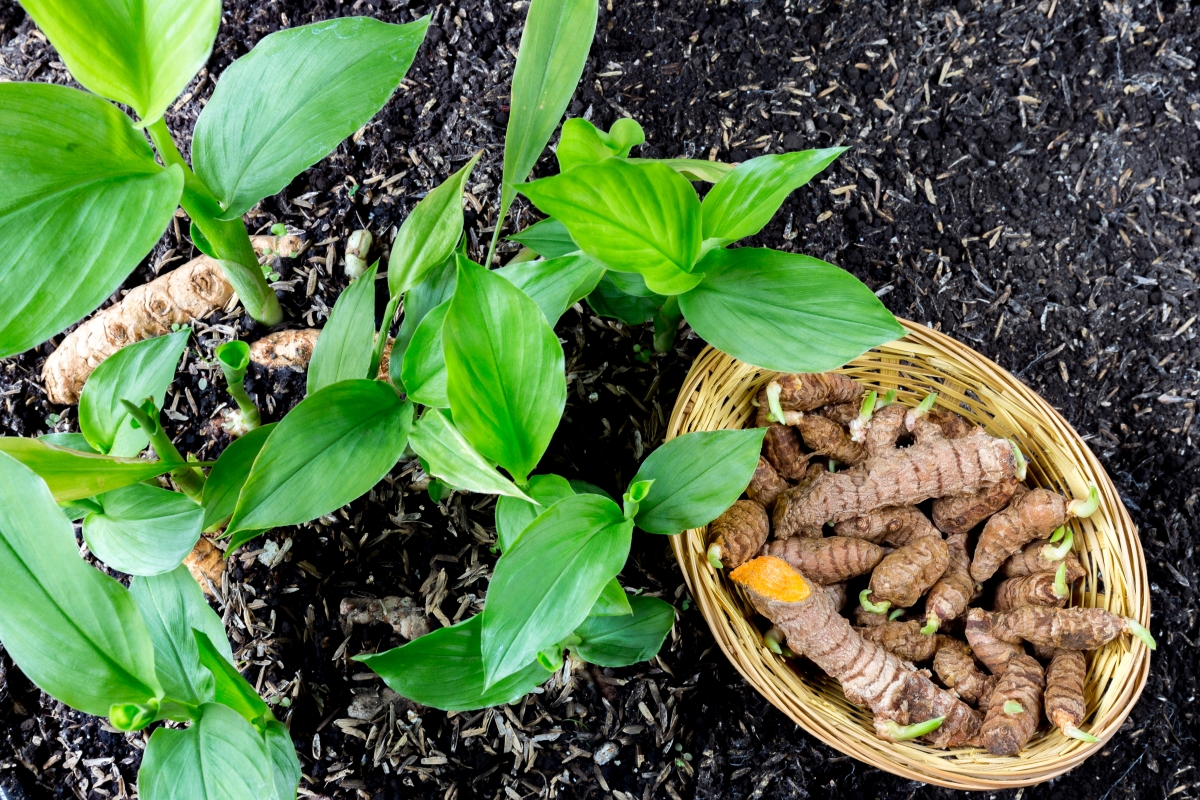
How to Grow Turmeric
Turmeric plants are fast-growing herbaceous shrubs that can grow up to 3 feet tall. They’re planted from existing turmeric rhizomes, which send up green shoots shortly after planting.
Since it’s an understory plant, accustomed to growing beneath a tree canopy in the tropics, it’ll actually do quite well indoors. Bright indoor sunlight isn’t all that different from the tropical shade.
Sprouting Turmeric for Planting
I like to sprout turmeric on the counter before planting as it ensures the plants get off to a good start. Otherwise, if the soil is too moist and cool, the rhizomes can rot before they sprout.
Start by leaving the turmeric rhizomes in a warm sunny space for a few weeks. Choose organic turmeric rhizomes, as conventional turmeric is sometimes treated with growth inhibitors that will prevent sprouting.
Once the turmeric has a few small green sprouts it’s time for planting.
(If you live in a particularly dry area, it may be necessary to soak the turmeric in lukewarm water for an hour or so once a week until it sprouts. This shouldn’t be necessary in most places with at least 50% ambient humidity.)
Once the turmeric has small sprouts and has begun growing, you can plant it in containers (or outdoors in zones 8 and above).
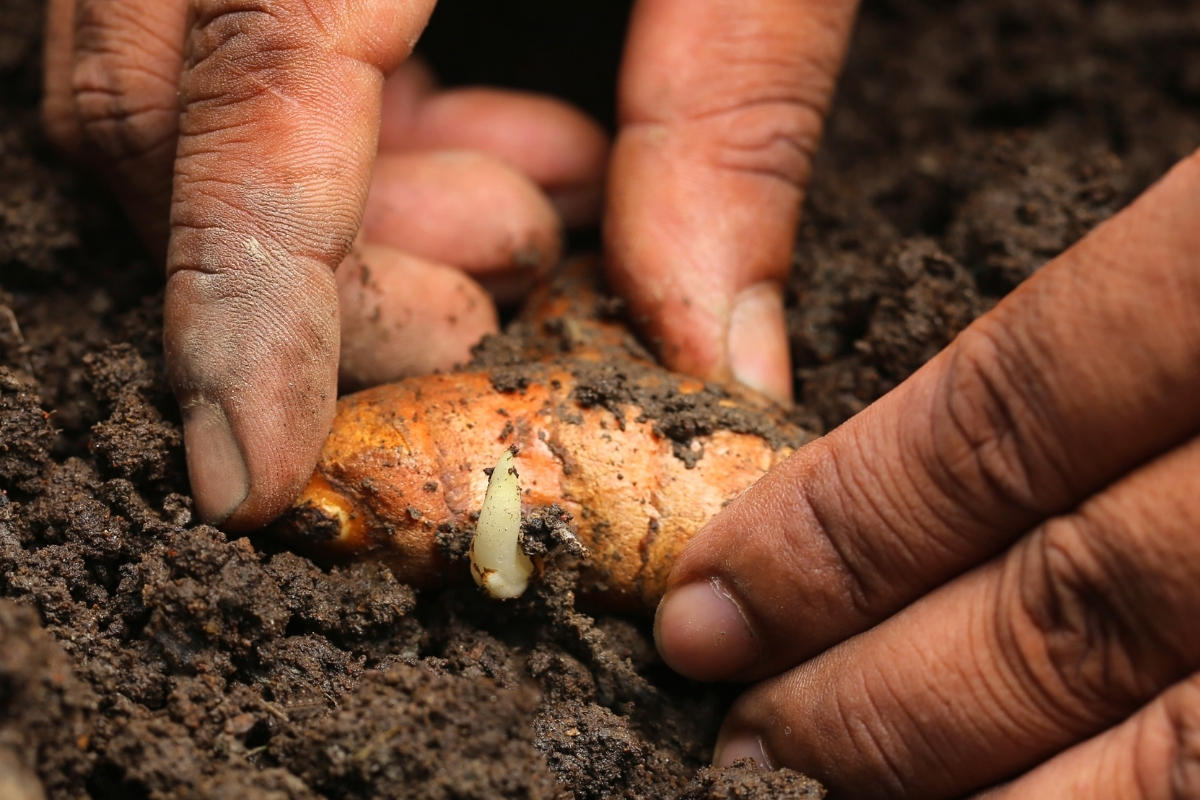
Growing Turmeric in Containers
Once the turmeric has sprouted, prepare a container by filling it with rich potting soil. Turmeric can grow in just about any container with good drainage.
Ideally, the container would be relatively shallow (about 8” deep) but have a very wide top. Turmeric grows in the top few inches of soil, and expands laterally. The more surface area in the pot, the more space the turmeric will have to grow.
Plant the turmeric horizontally in the soil, about 1-2 inches deep, with the green sprouts pointed upwards.
Water the plants well when they’re planted, but then allow the soil to dry out completely between waterings. Don’t allow the pots to sit continuously on saucers full of water, as this will cause the rhizomes to rot.
Early on, it can be helpful to place the pots on seedling heat mats to ensure that the turmeric plants get off to a warm start. Set the heat mats to around 75 to 80 degrees. Once the plants have several inches of green shoots, you can turn off the heat mats provided the plants are kept in a warm sunny location.
Turmeric is usually harvested about 10 months after planting, but it can be partially and repeatedly harvested from container-grown plants throughout the growing season.
The process is very similar to growing ginger, though I’ve found that turmeric grows much faster and yields better. In the picture below, turmeric (left) was planted in a container the same day as ginger (right).
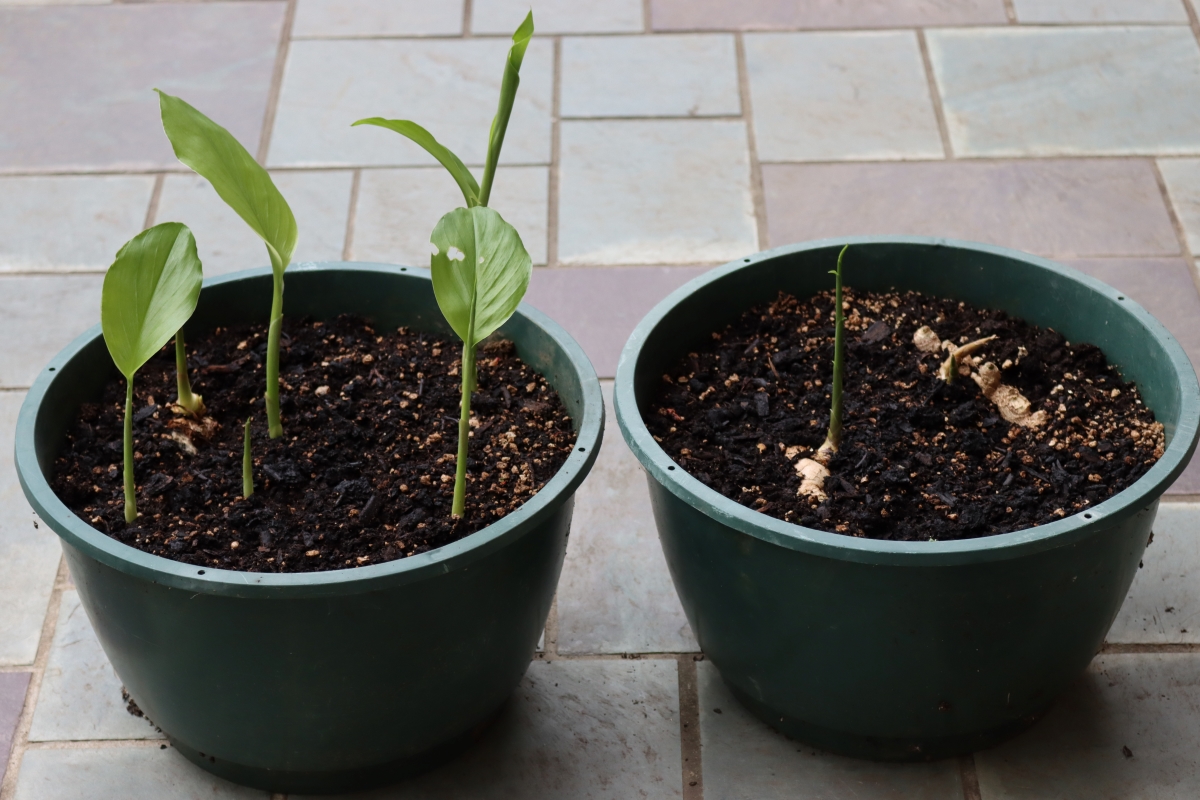
Growing Turmeric Outdoors
Generally, turmeric is only hardy in zones 8 or above, but it can still be grown outdoors in the summer months just about anywhere.
Start turmeric indoors about 10 months before your average first frost. Here in Vermont, our first frosts are usually in mid-October. That means starting turmeric indoors sometime in January is ideal.
We keep the young rhizomes in a sunny spot not far from the woodstove, and they do ok. They’d definitely do better with a heat mat to keep them at a more constant temperature.
Continue growing the plants indoors until after the risk of frost has passed, transplanting them to larger pots as necessary to allow for further growth.
Transplant turmeric outdoors along with other tender annuals at the same time you plant tomatoes and peppers in the garden.
Be sure to choose a location with partial shade, as turmeric doesn’t do well with intense mid-day heat. Remember, it’s an understory plant that grows best with some sun protection.
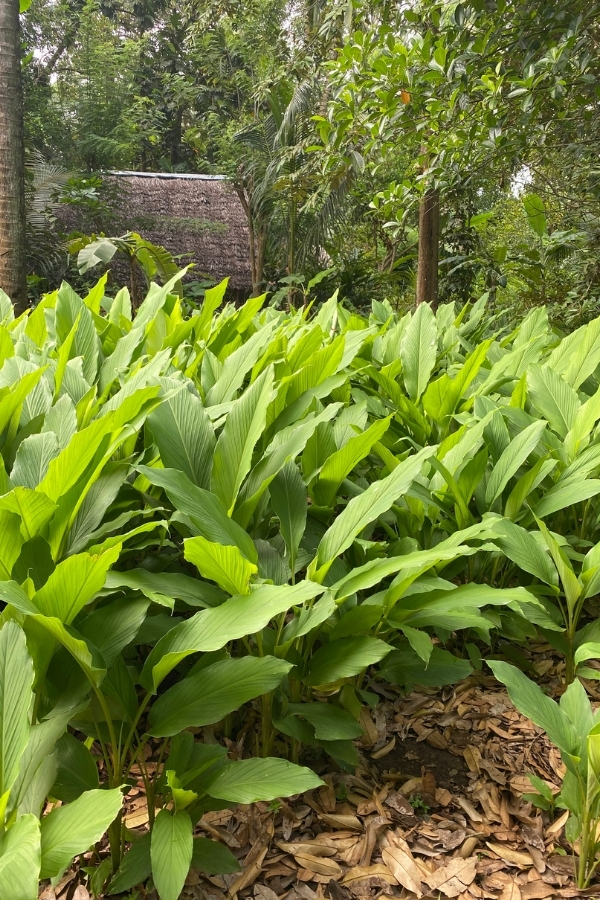
Harvesting Turmeric
Turmeric can be harvested in small amounts in as little as 3-4 months after planting, in much the same way as you’d harvest new potatoes. Reach in and gently pull up a few rhizomes, but try not to disturb the rest of the plant.
Generally, turmeric is harvested 10 months after planting.
Indoors, that can be anytime. Given that turmeric grows best with long days in a sunny window, it’s still best to plant it indoors in the winter months and allow it to mature over the sunny summer months.
Outdoors, harvest turmeric before the first frost. Pull up the entire plant, and then gently separate the rhizomes from the green stalks.
In warm locations (zone 8 and above), turmeric will still die back after about 10 months of growth to go dormant during a short period each winter.
Of course, you can harvest turmeric for a lower yield anytime during the growing process. After 3-4 months, the rhizomes will have grown and multiplied and can be pulled for a small harvest all summer long. You won’t get as much this way, but then you won’t have more than you can use before it spoils as is sometimes the case when you harvest it all at once in the fall.
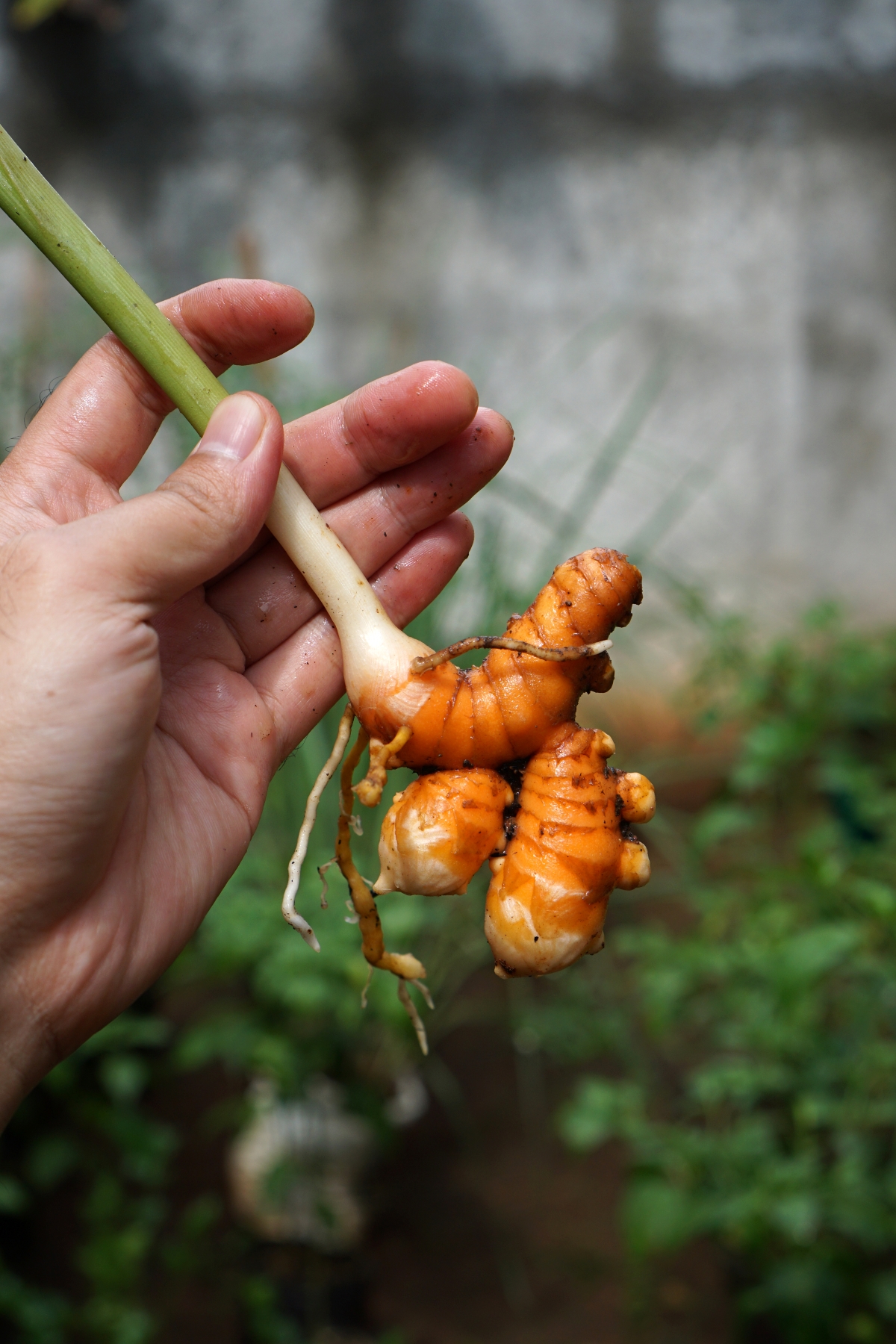
Cleaning and Storing Turmeric
After harvest, remove all the green growth from the turmeric rhizomes and gently wash them free of any dirt. Allow them to dry completely and then store at room temperature.
Be aware that turmeric only goes dormant for a few months, and that these are effectively living rhizomes. They will eventually either dry out or sprout. If kept in a warm, moderately humid environment (40-60% humidity) they’ll last the longest.
Once turmeric sprouts, it’s still perfectly fine to use. Or, you can simply plant turmeric again and start the cycle anew.
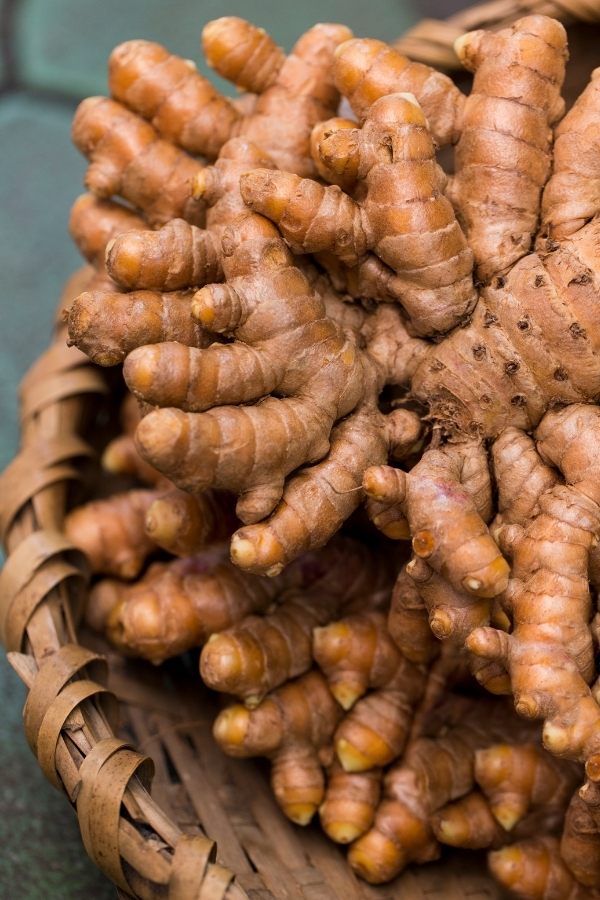
Using Homegrown Turmeric
Fresh turmeric is a bit different than powdered turmeric, and it can be used like a vegetable as well as a spice. Think about the difference between fresh sliced garlic and garlic powder. They have a similar flavor, but one is much more vibrant.
Peeling is optional, but most people agree that the flavor is better when you remove the outside layer. The outside tastes a bit like “dirt” in the same way that a carrot or ginger peel has an earthy flavor. It’s not “bad” but the flavor of the inside is more vibrant.
Peel it if you’d like, but know that peeling is a chore, and it’s often simpler to just grate the whole root with a micro plane so you won’t notice the peels.

Since fresh turmeric will sprout after a few months in storage, I like to make fermented turmeric paste if I’m not going to use it all quickly. Fermented turmeric paste keeps 12+ months in the refrigerator.
The anti-inflammatory compounds are more bio-available when the turmeric is fermented, and most high-quality turmeric supplements are made with fermented turmeric.
I’ve written instructions for making fermented turmeric paste, but if you’re new to fermentation, I’d suggest reading this beginner’s guide to lacto-fermentation before you get started.
You can a scoop of fermented turmeric in the same way you’d use regular turmeric powder or paste.
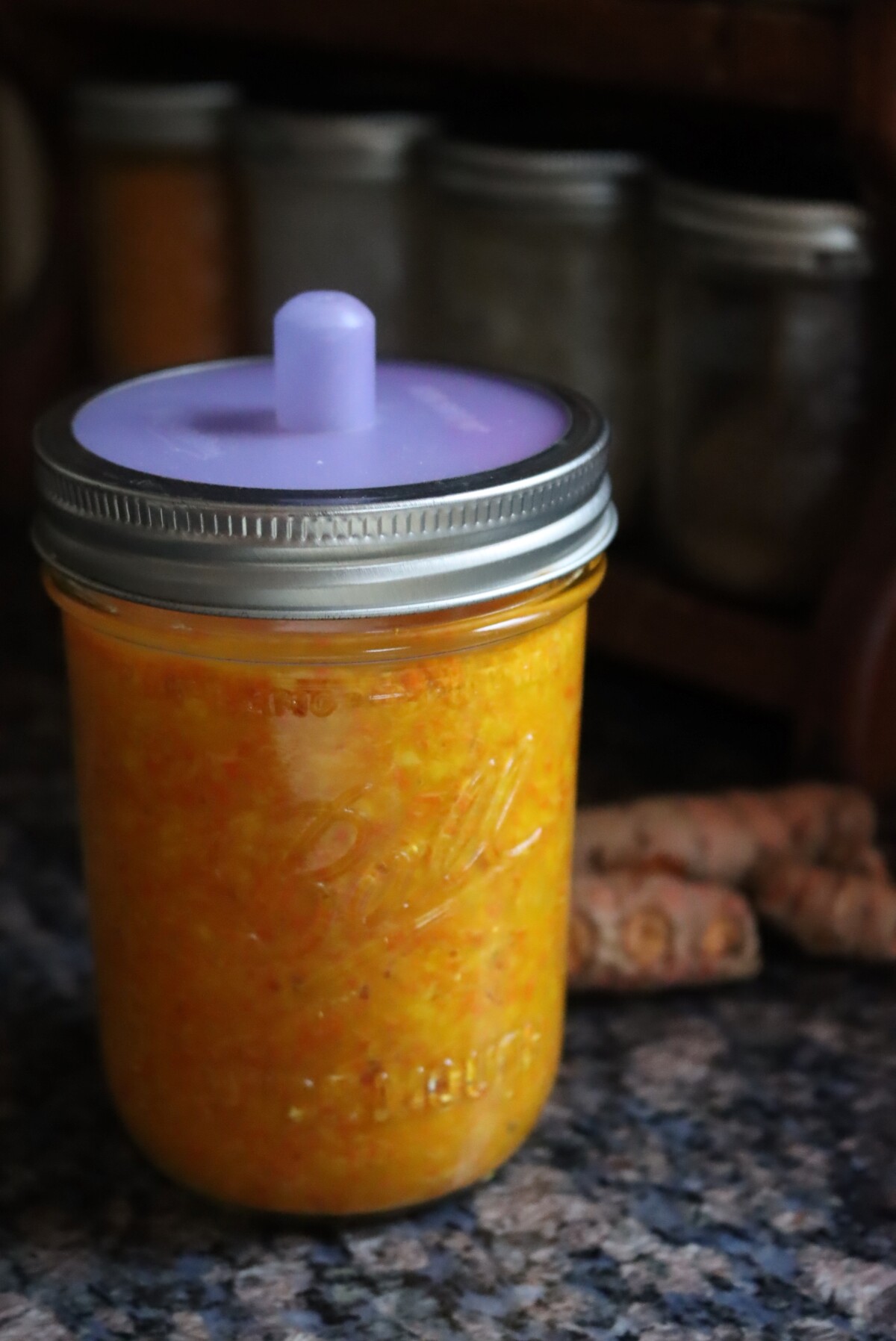
Tropical Plant Growing Guides
Looking for more tasty tropical plants you can grow anywhere?
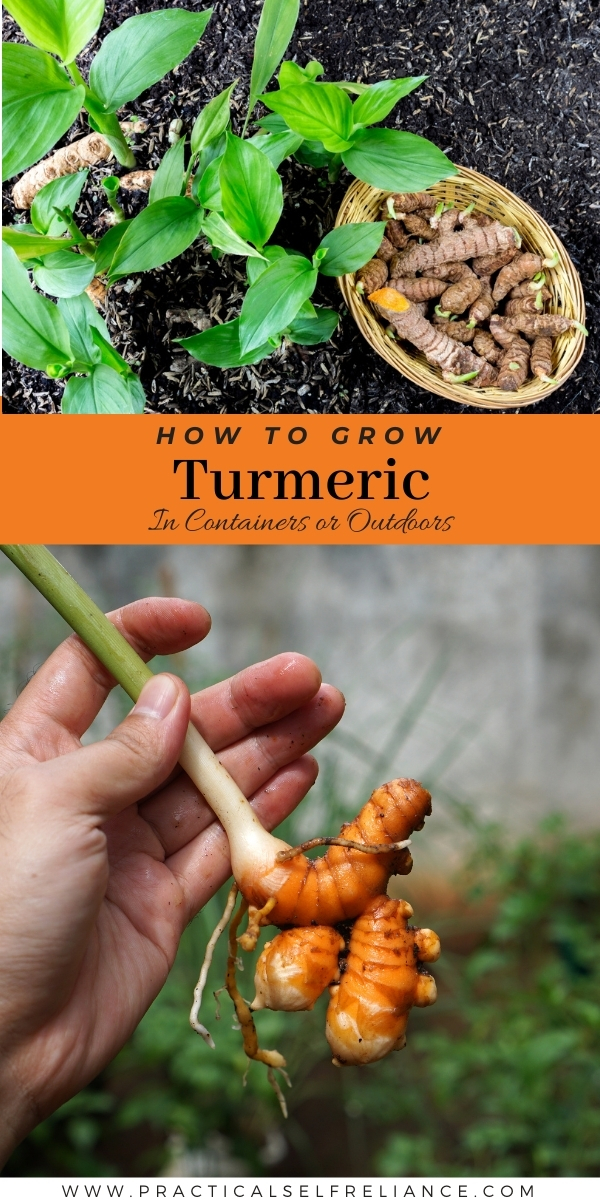




In zone 8, can you start planting now in November for indoor harvesting?
Hello, I live in Tanzania. I bought turmeric roots in market in Arusha and planted some roots in container but when leaves turned yellow I pull the plant out and found very tiny turmeric roots and lots of side roots looking almost white and oval. I can’t understand this? Can you help?
Did you follow the planting instructions in the post? Was there anything you did differently?
I had some turmeric plants indoors they died when I went on holiday
Oh no, so sorry that happened.
Hello, thanks for this. I have been trying to grow some so now I know it needs to be warmer.
Have you used the leaves – if so how please?
Cheers,
Turmeric leaves are often used in curries, chutneys, and soups. They can also be pickled and used as wraps for steamed items.
Excellent! So that would be true for other familiar Zingerberceae such as Ginger & Galangal?
Thank you.
Yes, you should be able to use those in a similar way.
Would love the recipe for your golden milk using raw turmeric! Most recipes seem to use powdered.
I don’t actually have a consistent recipe…I just kinda wing it every time, and it’s always tasty. I start with a bit more than a mug full of milk in a saucepan, add a cinnamon stick, 2-3 cardamom, 5 ish whole peppercorns, and a heaping tablespoon of fermented turmeric, plus any other spices that strike my fancy that day. I bring it to just barely simmering for just a few minutes. Then I turn off the heat and let it sit to infuse. If I forget it, I might re-warm it before pouring it into the cup, which seems to happen more often than not.
Sometimes I stir the turmeric paste into the cup at the end, rather than put it in the pot. It’s less strong that way, since it’s not infused as long, but it has a better chance of keeping some of the probiotics.
Sweeten if you’d like, with honey or whatever suits your taste.
I can not tell you how much I love your site! Any advise on where to obtain turmeric for me to start my own? I haven’t had any luck.i live in Missouri, if that helps.
If you can’t find it locally at health food stores, then the best places are Fedco seeds and Fruition seeds online. There are likely other seed catalogs that have it, I’m just familiar with those two and they’re great. I know they have high-quality organic plants, seeds, etc and I’ve had great luck with all their stuff.
A quick google search shows you can order them from all manner of other places too, like amazon, Etsy and a few other seed catalogs I’ve never tried (Southern Exposure Seeds, among others). Hope they work out for you!
Thank you so much for the information!
Thank you so much for these tips. My ginger has sprouted and I just started to think of turmeric to grow. Indoors, since I don’t have a garden.
You’re very welcome.